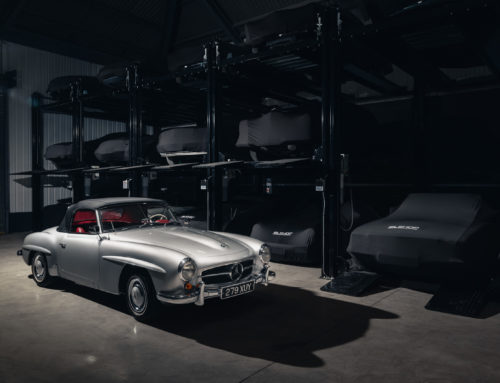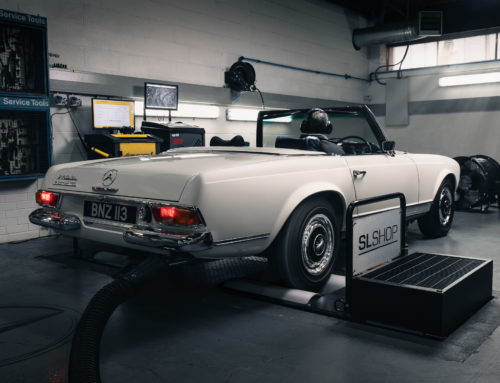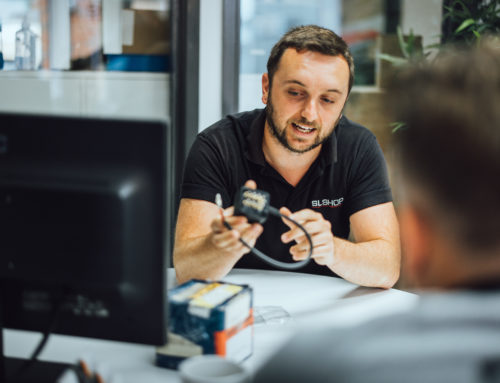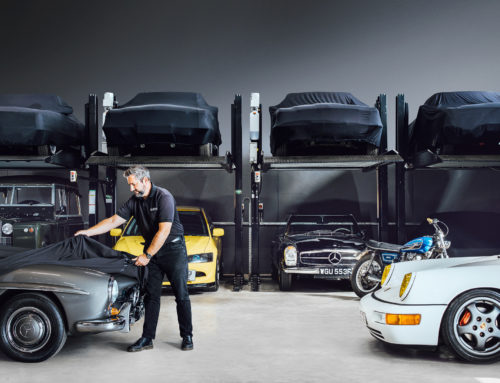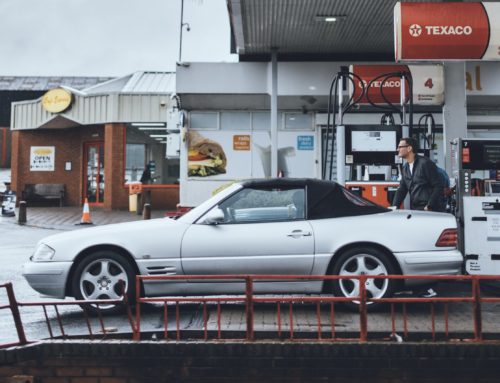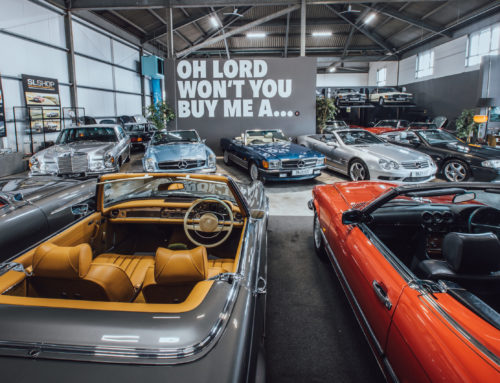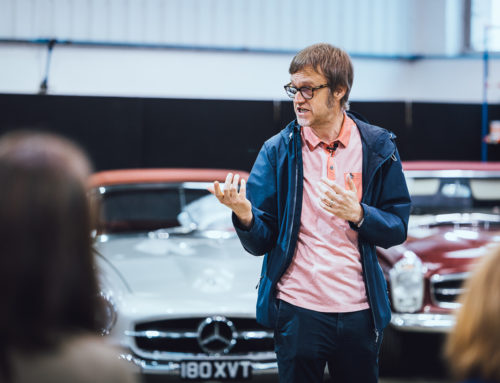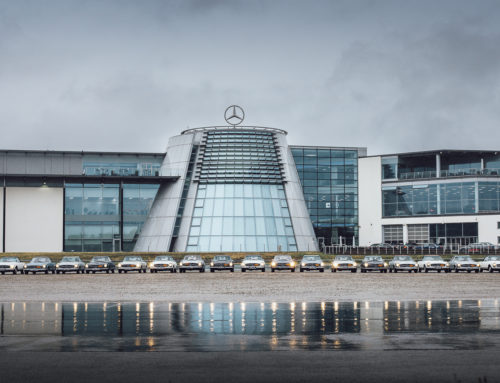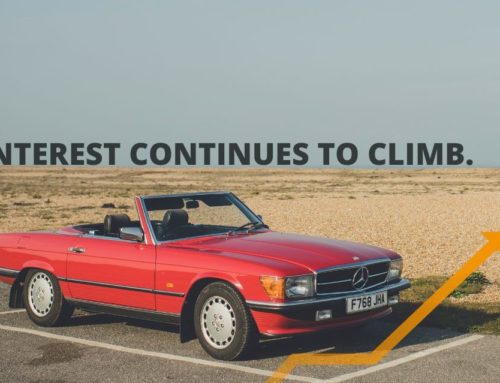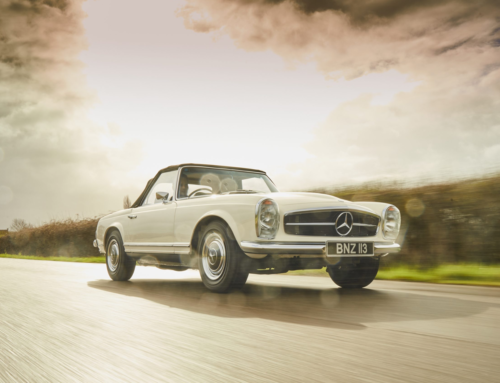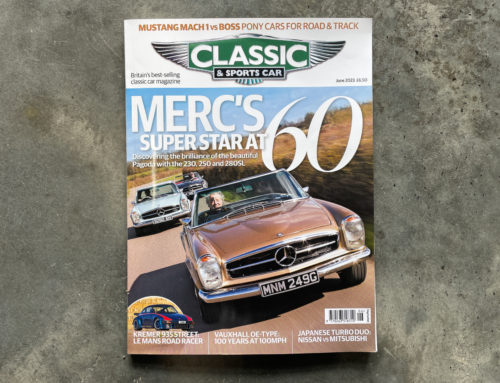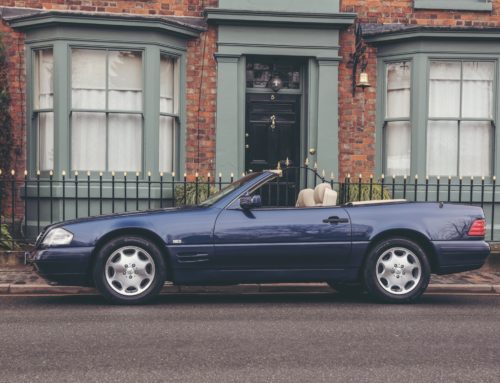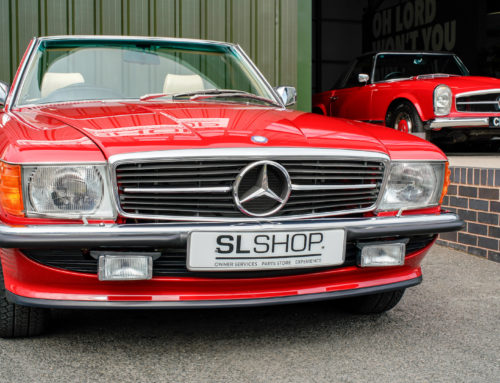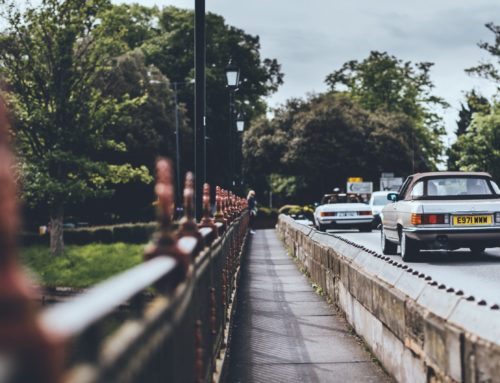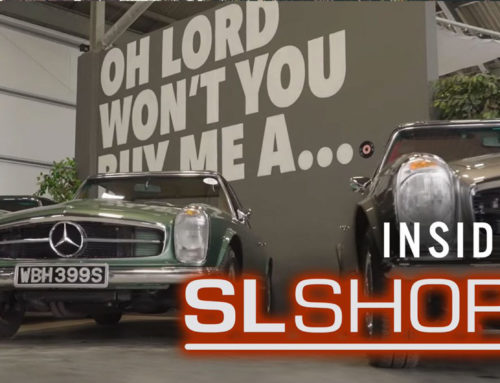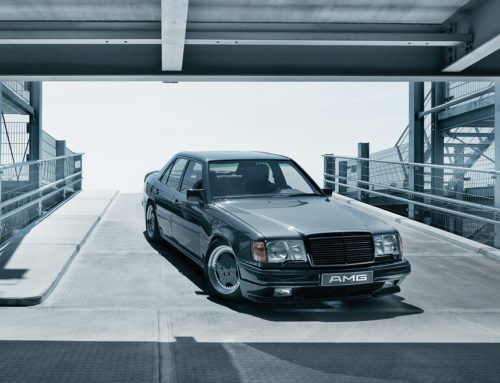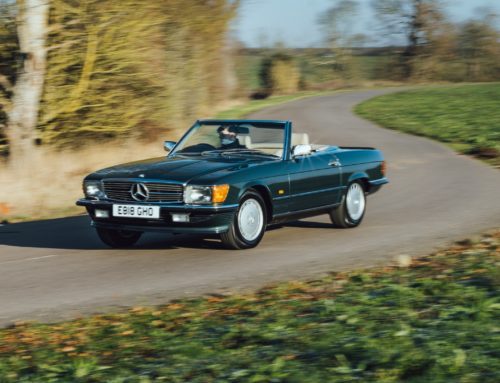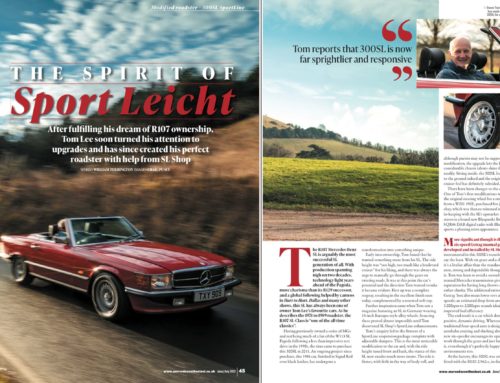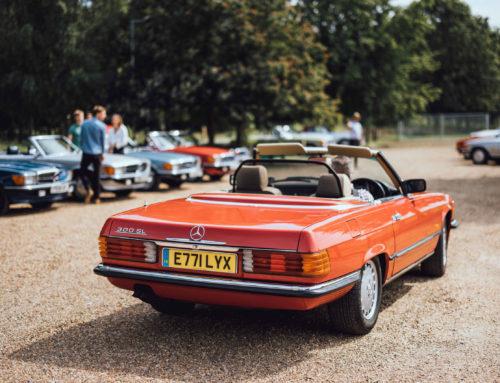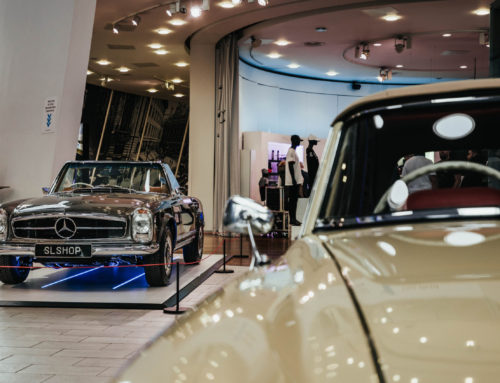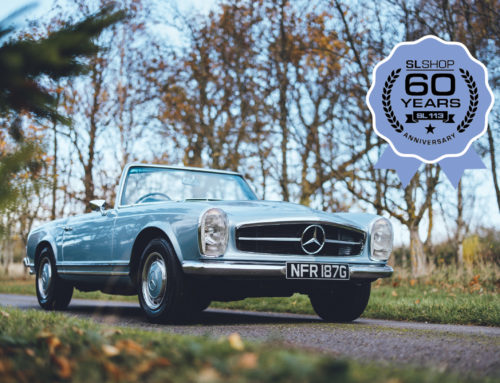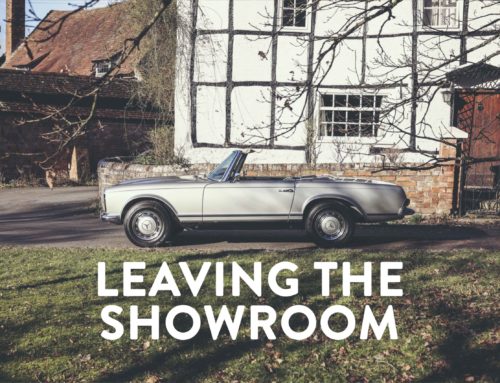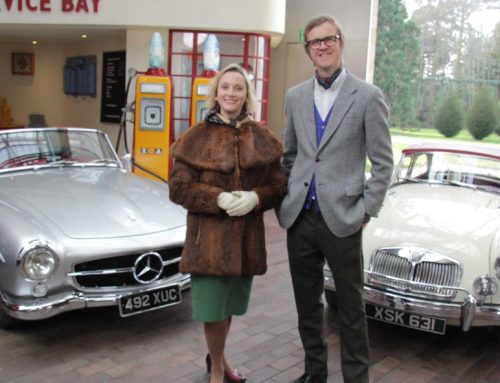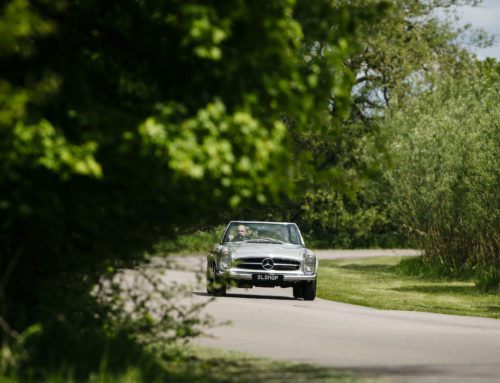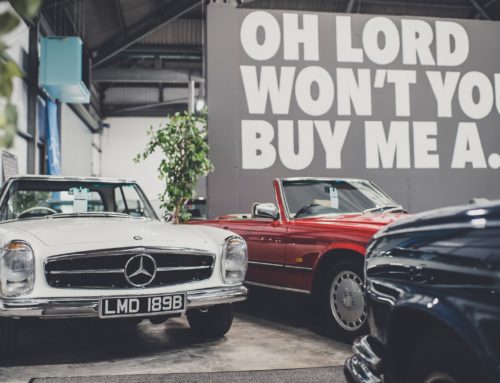In the 1970s, British Leyland advertised its Marina with the strapline “Style. It’s hard to define, but easy to recognise”. Nobody was fooled of course, because when something genuinely is stylish, it speaks for itself.
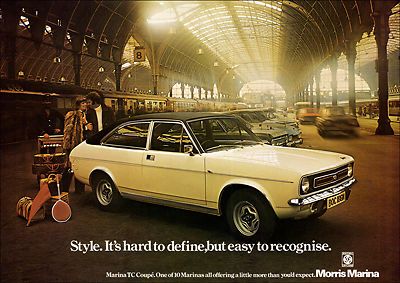
That’s why Mercedes advertised the R107 only sparingly; those who wanted and could afford one, knew all about its existence as soon as it was launched in 1971. At a time when posh two-seater drop-tops were few and far between, the R107 was the go-to premium roadster.
Part of the R107’s elevated status has always been down to the legacy left by its predecessors. When you’re following in the tyre tracks of cars as revered as the Gullwing and Pagoda, some of their glamour is bound to rub off. But the R107 has never needed its forebears to boost its own reputation, because this is a car that created its own mystique throughout the seventies and well into the eighties.
It helps that the R107 played a pivotal role in hit TV shows such as Hart to Hart, Dynasty and Dallas, all of which revolved around rich and glamorous people. Whether you loved these shows or hated them, you can’t deny that the SL summed up perfectly the wealth and glamour of the era. If you bought an R107 in the 1980s, your lifestyle suddenly became that bit more glamorous, simply by association.
Supercar beginnings
Whereas the first SL – the 300SL ‘Gullwing’ – was a fully fledged supercar, its successors, the 190SL and Pagoda, were merely sporting cars. That’s as opposed to sports cars, which put the emphasis on driving pleasure rather than grand touring abilities. By the time the R107 came along, Mercedes had softened things even further to create the perfect cruiser, and that’s how subsequent SLs have remained. (You can read our full SL history here)
Nowadays it’s easy to lose sight of just how special the R107 was when it was new. In an era of instant gratification and relative affordability thanks to easy finance, Mercedes posts record sales figures seemingly every year. But when the Stuttgart factory was making the R107, this was a car priced out of reach for most; part of its appeal was its exclusivity. But the SL wasn’t costly just because it could be; the engineering and technology that went into each one was tangible.
British Leyland didn’t have a monopoly on irony though; anything the British company could do, Mercedes could match. The SL is so called because Mercedes claims that it’s both Sporting and Light (or Sport Leicht in its homeland), when of course it’s not really either of these things. If it were, the SL probably wouldn’t be as revered as it is; much of its appeal is the tank-like build quality and its ability to cover huge distances with ease. The SL only feels hewn from solid rock because Mercedes didn’t skimp when it came to the amount of steel that went into each car.
The precision with which everything moved, the powerful engines and the premium materials that swathed the cabin combined to make the SL achingly desirable.
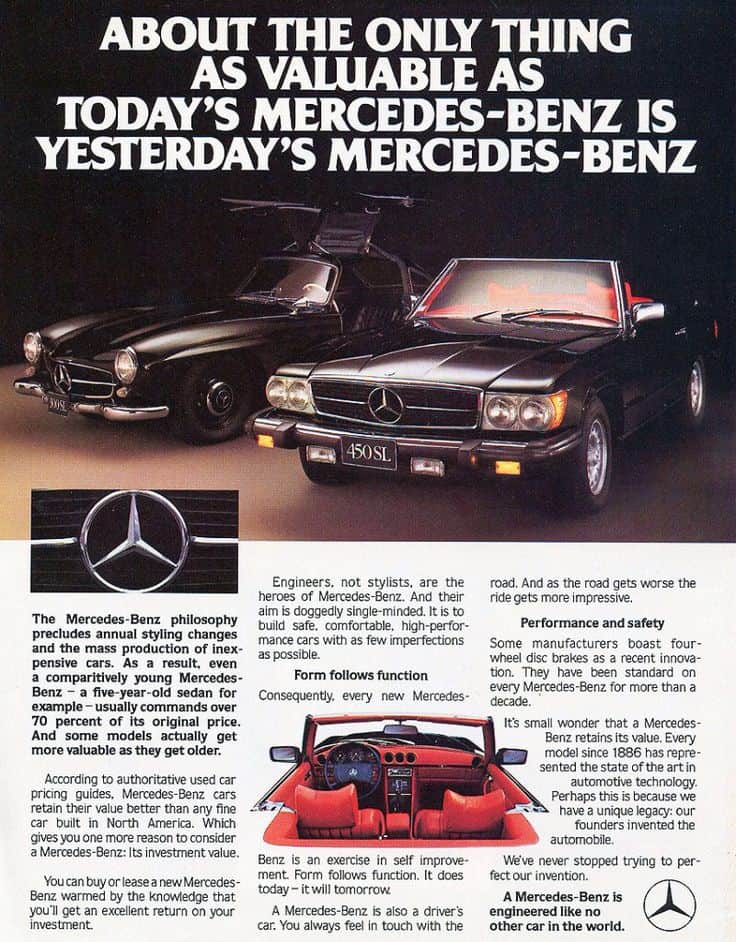
The precision with which everything moved, the powerful engines and the premium materials that swathed the cabin combined to make the SL achingly desirable. Everything operates with a reassuring solidity and it’s this quality at every turn that’s such a massive part of the SL’s appeal.
The R107 sat in its own corner of the market when it burst on to the scene in the early 1970s. Where else could you buy a truly premium two-seater roadster with eight (and many years later, six) cylinders? No wonder almost a quarter of a million were made during an 18-year production run.
Such a large output might not sound exclusive, but spread that over 18 years and it equates to less than 20,000 per year. That ultra-long production run is testament to the R107’s popularity – to the fact that Mercedes got this car so right, because when the last ones were made in 1989 they still looked classy and could cut the mustard, even if the R129 that followed was technologically rather more advanced.
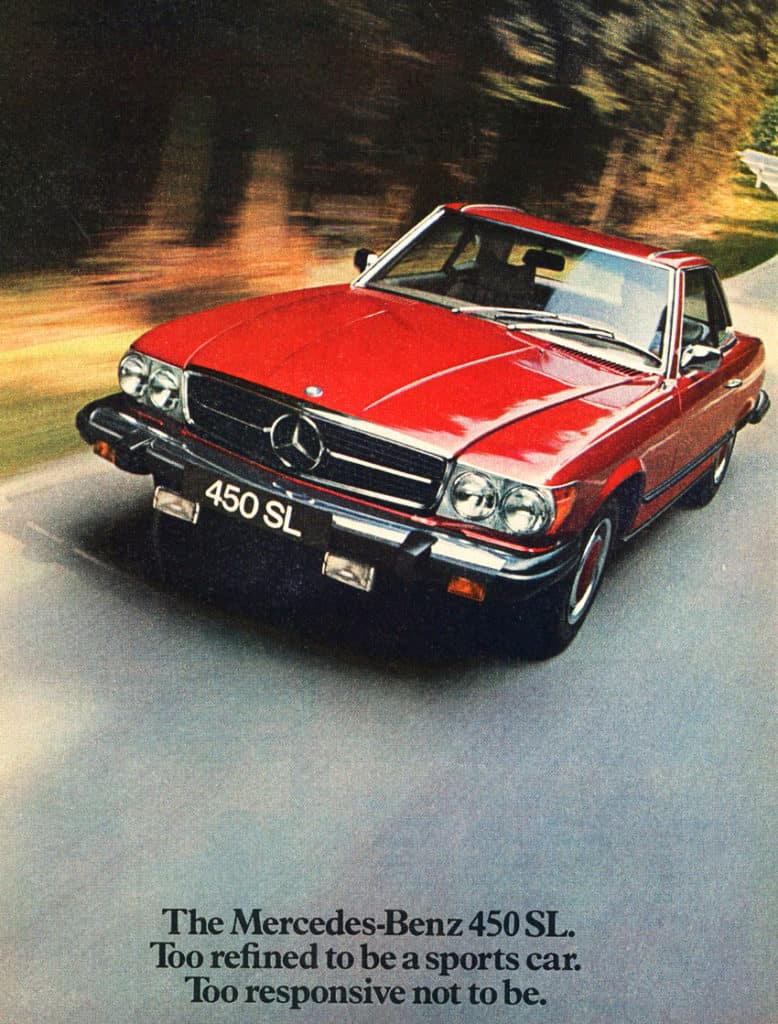
This year marks three decades since the last R107 rolled off the production lines, to be replaced by the R129. While that later car is up and coming, values of the earlier one have spiralled as buyers have cottoned on to the fact that the R107 is perhaps the perfect SL.
For some, despite oodles of elegance the Pagoda can’t hide it’s age, and the R129’s technological advancement means it’s just ‘too new’ for enthusiasts seeking lashings of style, wood and chrome. The R107 offers the perfect blend of panache, usability, safety and performance – while still remaining relatively attainable. It’s those things that make it an icon and which make it so alluring, with no sign of that desirability diminishing.
The R107 is a bona fide classic with its timeless 20th century design and 21st century usability. Built in an age when design was about elegance rather than Euro NCAP ratings, an R107 will attract admiring glances in any environment because it’s the perfect symbol of good taste… an accusation that can’t be levelled at many of its more modern rivals.
Words by Richard Dredge
Further Reading:
Is the R107 SL the ultimate classic car? Click Here
What is the history behind the R107 SL? Click Here
What cars did the R107 SL compete with when it was new? Click here
In the 1970s, British Leyland advertised its Marina with the strapline “Style. It’s hard to define, but easy to recognise”. Nobody was fooled of course, because when something genuinely is stylish, it speaks for itself.

That’s why Mercedes advertised the R107 only sparingly; those who wanted and could afford one, knew all about its existence as soon as it was launched in 1971. At a time when posh two-seater drop-tops were few and far between, the R107 was the go-to premium roadster.
Part of the R107’s elevated status has always been down to the legacy left by its predecessors. When you’re following in the tyre tracks of cars as revered as the Gullwing and Pagoda, some of their glamour is bound to rub off. But the R107 has never needed its forebears to boost its own reputation, because this is a car that created its own mystique throughout the seventies and well into the eighties.
It helps that the R107 played a pivotal role in hit TV shows such as Hart to Hart, Dynasty and Dallas, all of which revolved around rich and glamorous people. Whether you loved these shows or hated them, you can’t deny that the SL summed up perfectly the wealth and glamour of the era. If you bought an R107 in the 1980s, your lifestyle suddenly became that bit more glamorous, simply by association.
Supercar beginnings
Whereas the first SL – the 300SL ‘Gullwing’ – was a fully fledged supercar, its successors, the 190SL and Pagoda, were merely sporting cars. That’s as opposed to sports cars, which put the emphasis on driving pleasure rather than grand touring abilities. By the time the R107 came along, Mercedes had softened things even further to create the perfect cruiser, and that’s how subsequent SLs have remained. (You can read our full SL history here)
Nowadays it’s easy to lose sight of just how special the R107 was when it was new. In an era of instant gratification and relative affordability thanks to easy finance, Mercedes posts record sales figures seemingly every year. But when the Stuttgart factory was making the R107, this was a car priced out of reach for most; part of its appeal was its exclusivity. But the SL wasn’t costly just because it could be; the engineering and technology that went into each one was tangible.
British Leyland didn’t have a monopoly on irony though; anything the British company could do, Mercedes could match. The SL is so called because Mercedes claims that it’s both Sporting and Light (or Sport Leicht in its homeland), when of course it’s not really either of these things. If it were, the SL probably wouldn’t be as revered as it is; much of its appeal is the tank-like build quality and its ability to cover huge distances with ease. The SL only feels hewn from solid rock because Mercedes didn’t skimp when it came to the amount of steel that went into each car.
The precision with which everything moved, the powerful engines and the premium materials that swathed the cabin combined to make the SL achingly desirable.

The precision with which everything moved, the powerful engines and the premium materials that swathed the cabin combined to make the SL achingly desirable. Everything operates with a reassuring solidity and it’s this quality at every turn that’s such a massive part of the SL’s appeal.
The R107 sat in its own corner of the market when it burst on to the scene in the early 1970s. Where else could you buy a truly premium two-seater roadster with eight (and many years later, six) cylinders? No wonder almost a quarter of a million were made during an 18-year production run.
Such a large output might not sound exclusive, but spread that over 18 years and it equates to less than 20,000 per year. That ultra-long production run is testament to the R107’s popularity – to the fact that Mercedes got this car so right, because when the last ones were made in 1989 they still looked classy and could cut the mustard, even if the R129 that followed was technologically rather more advanced.

This year marks three decades since the last R107 rolled off the production lines, to be replaced by the R129. While that later car is up and coming, values of the earlier one have spiralled as buyers have cottoned on to the fact that the R107 is perhaps the perfect SL.
For some, despite oodles of elegance the Pagoda can’t hide it’s age, and the R129’s technological advancement means it’s just ‘too new’ for enthusiasts seeking lashings of style, wood and chrome. The R107 offers the perfect blend of panache, usability, safety and performance – while still remaining relatively attainable. It’s those things that make it an icon and which make it so alluring, with no sign of that desirability diminishing.
The R107 is a bona fide classic with its timeless 20th century design and 21st century usability. Built in an age when design was about elegance rather than Euro NCAP ratings, an R107 will attract admiring glances in any environment because it’s the perfect symbol of good taste… an accusation that can’t be levelled at many of its more modern rivals.
Words by Richard Dredge
Further Reading:
Is the R107 SL the ultimate classic car? Click Here
What is the history behind the R107 SL? Click Here
What cars did the R107 SL compete with when it was new? Click here
More from Journal
CARE
THE ULTIMATE CERTIFIED SERVICING INVESTMENT PLAN
Your ownership journey matters to us, which is why we have created a simple certified servicing investment plan, tailored to your individual needs and aspirations.
Start investing today and our dedicated CARE team will work with you to increase the value and enjoyment you receive from your vehicle.

STAY IN TUNE WITH SLSHOP MOMENTS
As part of SLSHOP’s community of enthusiasts, you’ll be the first to hear about events and tours, key product offers, exciting stories from owners around the world and of course… our latest additions to the showroom. So, be the first to know and you might just sneak a car on your driveway or take your car’s condition to new heights with our exclusive replacement parts.
Or, visit SLSHOP Journal
